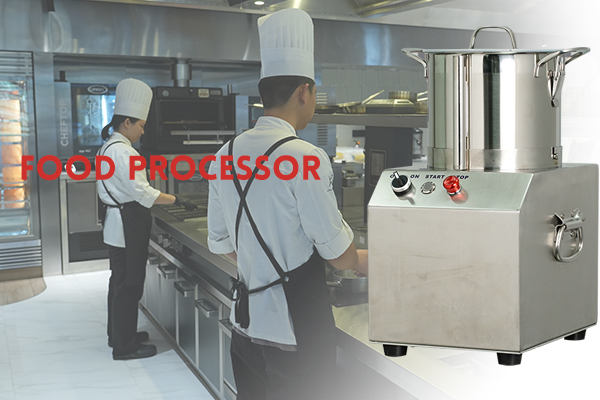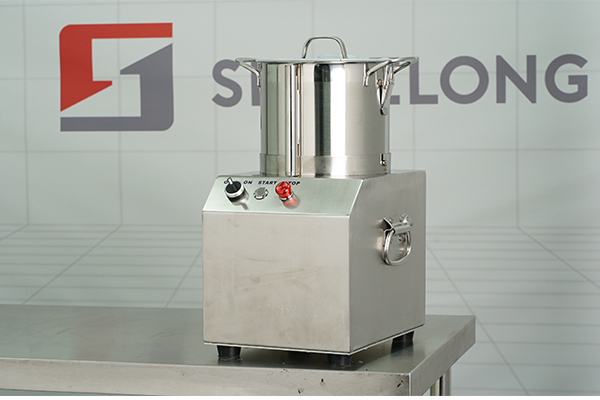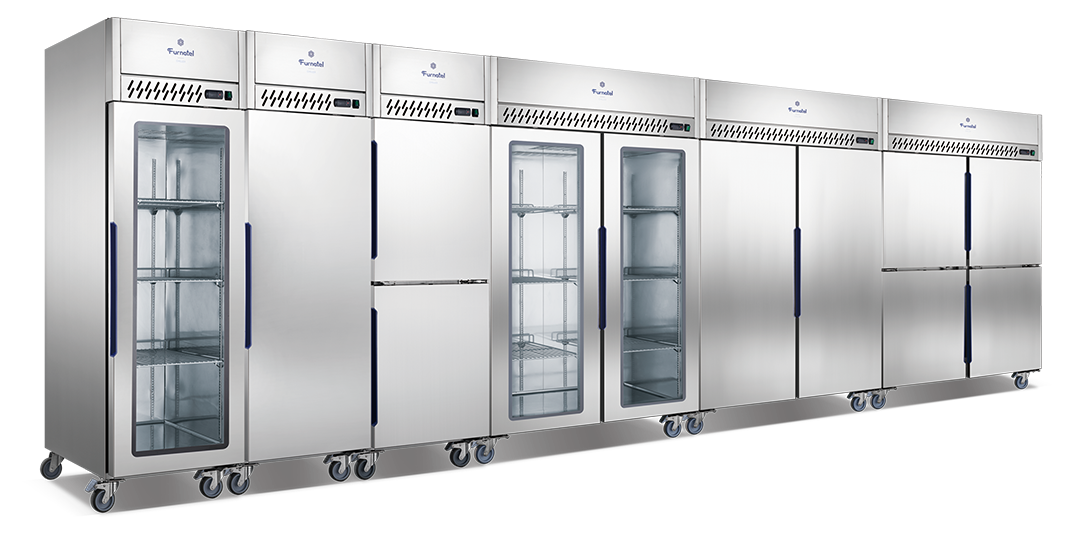SHINELONG-A leading supplier of turn-key solutions in the hospitality and catering since 2008.
Looking at the New Industry Opportunities Behind Commercial Electric Range Oven
The commercial electric range oven is always mentioned when Guangzhou Shinelong Kitchen Equipment Co., Ltd. shows up. Its role of significance is a result of the craftsmanship based design and manufacturing, the standardized production and inspection, and the extensive but intensive application scope. All this contributes to its internationalized sales. It is upgraded every year based on our in depth market research and our teams of talents.
Shinelong products have achieved remarkable sales growth since launched. There has been a large increase in the number of customers appealed to us for further cooperation. These products have been listed as one of the most popular products in every international exhibition. Each time the products get updated, it will attract great attention both from customers and competitors. In this fierce business battlefield, these products are always ahead of the game.
At SHIENLONG, we resort to handle customers' needs expertly through customization of commercial electric range oven. The fast response is guaranteed by our effort in staff training. We facilitate 24-hour service to answer customers' questions about MOQ, packaging, and delivery.
What Defines a Commercial Food Processor?

As the all-star multitasker designed for high-volume tasks, a commercial food processor stands out with its powerful motor (typically over 800W), enabling it to operate at full speed for 4 - 8 hours continuously. This contrasts with home models, which can't match its endurance. The 8 - 20-liter work bowl of a commercial food processor handles three to five times the capacity of a home unit in one go, making it ideal for large-scale food preparation tasks that are common in commercial settings.
Constructed from 304 stainless steel or food-grade engineering plastic, commercial food processors are built to last. Their materials not only ensure durability but also meet HACCP standards for hygiene and safety. The heavy-duty design provides industrial-strength protection, which is essential in high-volume kitchens where efficiency and reliability are paramount.
One of the most valuable aspects of a commercial food processor is its modular design, which allows for quick changes among over 20 attachments. With attachments ranging from vegetable slicing discs and dough hooks to emulsifying blades, it offers the versatility needed to handle a wide array of food preparation tasks. This adaptability makes it an essential tool for various food service establishments, including hotels, central kitchens, and fast-food chains. These businesses can achieve standardized, batch-oriented production with ease, ensuring consistency and quality across different recipes and menu items.
7 Clear Advantages for Commercial Kitchen Operations

1. Industrial-Grade Efficiency
Shinelong food processing equipment exemplifies how high-duty processors revolutionize prep work. Its 1,200 RPM blade system shreds 15 lbs of cabbage in 90 seconds—a task requiring 25 minutes manually. Continuous feed chutes let staff add ingredients mid-operation, slashing downtime during rush hours. For bakeries, this means whipping 10 L of meringue in one batch while simultaneously kneading dough.
2. Precision Engineering for Consistency
Michelin-starred kitchens rely on devices like our vegetable cutter for millimeter-perfect cuts. Adjustable blades (0.2-8mm thickness) ensure carrot coins in a chain restaurant measure identically across 500 locations. Digital timers sync with blade speeds, guaranteeing uniform texture whether processing tender herbs or frozen meat blocks.
3. Cost-Effective Space Optimization
A single commercial kitchen equipment unit replaces six appliances: mandoline slicers, grinders, mixers, and more. The shinelong food processing equipment demonstrates this versatility—its emulsifying disc creates silken hollandaise while the grating kit produces 40 lbs of cheese per hour. This consolidation reduces equipment costs by 60% and storage needs by 75%, as documented in NRA's 2023 kitchen space utilization study.
4. Enhanced Food Safety Protocols
Commercial models integrate failsafe mechanisms absent in consumer-grade devices. For example, Shinelong's meat slicer features triple-lock safety interlocks that halt operation if the meat is misaligned, while antimicrobial blade coatings inhibit bacterial growth. NSF-certified models reduce cross-contamination risks through seamless, crevice-free designs.
5. Labor Cost Reduction
According to NAFEM's analysis, a commercial food processor handling 200 lbs of daily prep cuts labor hours by 4.5 per shift. Actually, our commercial appliance achieves this through automated batch processing—its 20L bowl preps salad bases for 300 covers without manual intervention, allowing staff to focus on plating and quality control.
6. Energy Efficiency at Scale
High-duty motors in commercial-grade food processors deliver superior energy efficiency compared to multiple smaller appliances working in tandem. Lab tests demonstrate that a 1,500W industrial model consumes only 0.4 kWh to process 100 pounds of vegetables, while three conventional 500W household units require 1.8 kWh for the same task. This stark difference in energy consumption translates to annual savings exceeding $2,500 for an average restaurant, highlighting how commercial kitchen equipment optimizes power usage through robust engineering and streamlined workflows. By consolidating tasks into a single high-performance system, kitchens reduce both electricity waste and operational costs without compromising output quality.
7. Adaptability Across Cuisines
From sushi bars to steakhouses, these processors solve niche challenges. Some processing machine creates paper-thin beef slices for shabu-shabu using their -4°C chilled blade system, while pulsing salsas without crushing delicate herbs. Food trucks particularly benefit from a compact food processor, which processes 8 lbs of taco fillings per minute using 30% less counter space.
Conclusion
Investing in a professional food processor isn't just about speed—it's about building a resilient commercial kitchen infrastructure. As ingredient costs and labor shortages intensify, these machines provide the precision, scalability, and compliance modern food businesses demand. Whether perfecting a signature sauce or standardizing global menus, they're the invisible force driving profitability in today's competitive culinary landscape.

- What is a food processor?A food processor is an electric kitchen appliance with interchangeable blades revolving inside a container to chop, slice, shred, mince, purée, or otherwise process food quickly.
- What is the use of a commercial food processor?A commercial food processor streamlines high‑volume kitchen tasks—such as slicing, dicing, shredding, pureeing, and mixing—to save labor and ensure uniform results in hotels, central kitchens, and fast‑food chains.
- What are the advantages of using a food processor?Food processors save time by automating repetitive prep tasks, delivering consistent texture across batches, and handling a wide range of functions—from shredding and slicing to kneading—thanks to versatile attachments.
- Why is a food processor better than a blender in a commercial kitchen?Unlike blenders geared toward liquids, food processors excel with solid ingredients—chopping, slicing, and kneading dough, making them more versatile for batch prep and thicker consistencies.
- Are you manufacturer?Yes,we are half manufacturer half trading company. Manufacturing Furnotel brand equipment, trading for all kinds of kitchen equipment,especially turn-key solution.
- Is it worth having a food processor?For cooks who frequently prepare sauces, nut butters, doughs, or large quantities of ingredients, a food processor is a worthwhile investment, offering durable, multifaceted performance that outpaces manual prep.
As we approach the final quarter of the year, the winter season brings an abundance of opportunities for restaurants to capitalize on holiday festivities, family gatherings, and cozy dining experiences. The right strategies, from menu planning to kitchen optimization, can elevate your guests' experience and set your business up for success during the busiest time of the year. Here are some expert tips to help restaurant owners, chefs, and kitchen managers prepare for winter with an eye on maximizing efficiency, customer satisfaction, and profitability.
Winter Menu: Comfort Food and Seasonal Ingredients
Winter is the season for comfort food—hearty, warm dishes that offer a sense of indulgence and warmth. This is the perfect time to incorporate seasonal ingredients that speak to the heart of winter dining. Think rich stews, slow-cooked meats, fresh root vegetables, and decadent desserts.
Popular Winter Dishes:
• Hearty Soups and Stews: From French onion soup to beef bourguignon, slow-cooked dishes are always a hit.
• Roasts and Grilled Meats: Roast lamb, turkey, and prime rib are staples during the winter holidays.
• Baked Goods and Desserts: Winter is the perfect season for pies (apple, pumpkin, pecan), cakes, and custards.
• Comforting Beverages: Hot cocoa, mulled wine, and spiced cider are popular for festive events and gatherings.

Key Seasonal Ingredients:
• Root vegetables like carrots, parsnips, and sweet potatoes
• Brassicas like Brussels sprouts, cabbage, and kale
• Warming spices like cinnamon, nutmeg, and cloves
• Seasonal fruits like apples, pears, and cranberries

Incorporating these into your menu not only captures the essence of the season but also allows your kitchen to maximize on the availability of fresh, local produce, often at lower costs than out-of-season items.
Kitchen Equipment Adjustments for Winter Menus
With more complex dishes being prepared and served in larger quantities, your kitchen equipment must be up to the task. Here’s what to focus on:
• Bakery Equipment and Convection Ovens: For roasts, baked goods, and slow-cooked stews, commercial ovens need to be in top condition. Consider upgrading to high-efficiency convection ovens that provide even heat distribution and energy savings—essential for the busy holiday season.
• Soup Kettles and Stock Pots: Winter menus often feature large quantities of soups and stews, making commercial soup kettles and stock pots essential tools. Ensure your kitchen has the capacity to handle bulk cooking and reheating.
• Grills and Rotisseries: For grilling meats and poultry, consider rotisserie ovens for even, flavorful cooking, especially for winter favorites like rotisserie chicken, lamb, and seasonal vegetables.
• Refrigeration Equipment: As fresh ingredients like meats, dairy, and root vegetables fill the kitchen, it’s important to have a high-performance commercial refrigerator and freezer. Ensure they are running at optimal efficiency to handle the increased volume of perishables.
• Food Preparation: Invest in stainless steel prep tables and cutting boards to manage the increased workload in the kitchen. Ensure your prep stations are organized for efficiency, as many winter dishes require substantial prep time.

Creating a Festive Atmosphere to Attract Guests
Winter is a season of celebration, and your restaurant’s ambiance can play a big part in attracting guests. To create a memorable dining experience, focus on both visual appeal and comfort:
• Seasonal Décor: A warm, festive environment with holiday decorations—like twinkling lights, seasonal wreaths, and cozy table settings—enhances the overall dining experience.
• Interactive Events and Specials: Hosting cooking classes, tasting events or wine pairings can create buzz and attract customers. Wintertime is ideal for themed events like “Holiday Cookie Decorating” or “Winter Wine Tastings” that offer guests a unique, hands-on experience.
• Takeout and Delivery: Don't forget about customers who prefer dining at home. Offering winter-themed takeout menus, bundled meal options, or holiday catering services can keep your revenue flowing.

Kitchen Prep for the Busy Season
To ensure smooth operations during this hectic period, consider making some adjustments to your kitchen workflow and equipment:
• Pre-Cooking and Prep Work: To reduce strain during peak hours, pre-cook elements like sauces, broths, and certain meats in advance. This will allow your kitchen to focus on finishing dishes quickly during service hours.
• Energy Efficiency: Winter can lead to higher energy costs with heating needs. Ensure your kitchen appliances are energy-efficient—look for Energy Star-rated equipment to help save costs and reduce your carbon footprint.
Winter offers a wealth of opportunities for restaurants to delight customers with seasonal dishes and festive experiences. By carefully planning your menu, optimizing your kitchen equipment, and preparing for the holiday rush, you can ensure that your restaurant is ready to deliver exceptional food and experiences. From hearty comfort foods to holiday-themed events, make sure your kitchen is equipped and your team is prepared to turn this winter into a memorable season for your guests.
With the improvement of people's living standards and consumption capacity, diet has also begun to diversify. Many Western-style kitchen equipment has entered the catering industry and commercial kitchens, and the desktop commercial electromagnetic griddle we are going to talk about today is one of them. So what is a desktop commercial electromagnetic griddle? What are the functional features? Let's take a look at the following SHINELONG editor. What is a desktop commercial electromagnetic griddle? Electromagnetic griddle, also known as teppanyaki, is used to fry various foods, meat products, etc.; a desktop commercial electromagnetic griddle is a kitchen appliance that uses the principle of electromagnetic induction to convert electrical energy into thermal energy. According to the functional characteristics, it can be divided into: single griddle and double griddle; according to the use characteristics, it can be divided into: desktop griddle, cabinet griddle, flat griddle and pit griddle. Functional features of desktop commercial electromagnetic griddle 1. The body is made of food stainless steel in one piece, which is not easy to rust and deform, corrosion-resistant, and has a long service life. The design, structure, material and other characteristics meet national and health standards. 2. 3D stereo radiation shielding design, stronger resistance to electromagnetic interference. 3. The most advanced electromagnetic induction heating technology is used to allow the pot to be heated directly, quickly and evenly. 4. The German imported Siemens "infineon" IGBT heating module has a longer service life. 5. The movement adopts a modular design for easy maintenance. 6. The waterproof 360° rotating 8-speed magnetic switch can adjust the desired firepower according to the needs of the ingredients. 7. The streamlined operation panel, 0-300℃ fine temperature control, adopts European professional one-button temperature control switch, and the precise temperature control probe design is more energy-saving. Advantages of commercial desktop electromagnetic griddle: 1. High efficiency: shorter preheating time than gas griddle, higher thermal efficiency, adjustable power, convenient and power-saving; 2. Energy saving: more than 50% energy saving than gas griddle; saving money = making money; 3. Safety: 18 safety protections such as waterproof, anti-smoke, anti-leakage, anti-dry burning protection, etc., safer and more worry-free to use; 4. Environmental protection: no open flame, no smoke, no exhaust gas, ultra-quiet design (below 45 decibels), optimize the kitchen environment; 5. Beautiful: all-food stainless steel precision and meticulous humanized design, high-end, durable, easy to clean; 6. Round oil leakage hole, you can clean up the residue and excess waste oil at any time, clean and more hygienic. 7. The drawer-type enlarged oil collection box allows you to no longer worry about overflowing when you are busy. 8. Thickened griddle, smooth surface, no welding points, rapid heat transfer, not easy to deform. 9. There are large-area heat dissipation holes on the bottom and sides for good heat dissipation. 10. Special high-frequency wire reel with high temperature resistance, concentrated firepower, faster speed and durability; 11. Stoves and heating equipment of different sizes and powers can be customized according to customer needs. Commercial electromagnetic grill, also known as teppanyaki, is a way of eating a dish; commercial electromagnetic grill brings a more efficient and convenient way of serving food to the catering industry. It has the characteristics of high energy saving rate, no noise, no pollution, etc., and is the only choice for the western food industry. The above is the introduction of commercial electromagnetic grill by SHINELONG editor. If you have any questions about other kitchen equipment, you can pay attention to SHINELONG commercial kitchen equipment, and the editor will answer you.
Artisan bread baking is a craft that requires precision, skill, and the right equipment. When it comes to choosing the ideal oven for baking artisan bread, many bakers often find themselves torn between a deck oven and a convection oven. Both have their unique features and benefits, but which one is truly ideal for artisan bread baking? In this article, we will delve into the differences between a deck oven and a convection oven, exploring their pros and cons to help you make an informed decision.
The Deck Oven
A deck oven is a traditional baking oven that consists of one or more flat baking surfaces, known as decks, where bread is placed to bake. These decks are made of stone, ceramic, or other materials that retain heat and provide even heat distribution, creating the perfect environment for baking artisan bread. Deck ovens are typically used in bakeries and pizzerias where high-quality bread and crusty pizzas are a priority.
One of the key advantages of a deck oven is its ability to create a moist baking environment that is conducive to achieving a crispy crust and a soft, chewy interior in artisan bread. The heat stored in the deck helps to create steam during the baking process, which is essential for developing the desired texture and flavor in bread. Additionally, the stone or ceramic surface of the deck imparts a unique flavor to the bread, adding depth and complexity to the final product.
However, there are some drawbacks to using a deck oven for artisan bread baking. Deck ovens tend to have a slower recovery time compared to convection ovens, meaning that it may take longer to bake multiple batches of bread in quick succession. Additionally, the lack of a fan in a deck oven can result in uneven baking, with the top of the bread browning faster than the bottom. This can be mitigated by rotating the loaves during the baking process, but it requires extra attention and effort.
The Convection Oven
On the other hand, a convection oven is a modern baking oven that uses a fan to circulate hot air around the food, ensuring even heat distribution and faster cooking times. Convection ovens are popular in commercial kitchens and home kitchens alike for their efficiency and versatility. When it comes to baking artisan bread, convection ovens offer some unique advantages that make them a viable alternative to deck ovens.
One of the main benefits of using a convection oven for artisan bread baking is its ability to bake multiple trays of bread at once, thanks to its rapid heat recovery and even baking. This can be particularly useful in a busy bakery or restaurant where efficiency is key. The fan in a convection oven also helps to create a uniform baking environment, ensuring that all the loaves are baked to perfection without the need for manual rotation.
Despite its many advantages, a convection oven may not be the ideal choice for all types of artisan bread. The circulating air in a convection oven can result in a drier baking environment, which may not be suitable for bread that requires a moist, steamy atmosphere to develop the desired crust and crumb. Additionally, the lack of direct heat from a stone or ceramic surface in a convection oven can lead to a less pronounced crust and a softer interior in some types of bread.
Choosing the Ideal Oven for Artisan Bread Baking
When it comes to choosing between a deck oven and a convection oven for baking artisan bread, there are several factors to consider. The type of bread you plan to bake, the volume of bread you need to produce, the space available in your kitchen, and your budget are all important considerations. Ultimately, the ideal oven for artisan bread baking will depend on your specific needs and preferences.
If you are a purist who values traditional baking methods and is willing to invest the time and effort required to master the art of bread baking, a deck oven may be the perfect choice for you. The unique flavor and texture that a deck oven can impart to artisan bread are unmatched by any other type of oven, making it a favorite among professional bakers and bread enthusiasts.
On the other hand, if you are looking for a more efficient and versatile oven that can handle a high volume of bread production with ease, a convection oven may be the better option for you. The fast cooking times and even baking that a convection oven provides can help streamline your baking process and increase your overall productivity without sacrificing quality.
In conclusion, both deck ovens and convection ovens have their own set of advantages and disadvantages when it comes to baking artisan bread. The ideal oven for you will depend on your personal baking style, preferences, and requirements. Whether you choose a deck oven for its traditional baking methods and unique flavor profile or a convection oven for its efficiency and versatility, the key to successful artisan bread baking lies in understanding the strengths and limitations of each type of oven and using them to your advantage.
Commercial Electric Salamander for Schools: Meeting Safety and Hygiene Standards
As schools around the world are in constant need of efficient and reliable kitchen equipment, commercial electric salamanders have become a popular choice for many educational institutions. These versatile cooking appliances are essential for preparing a wide range of dishes quickly and effectively. In this article, we will explore the features and benefits of a commercial electric salamander specifically designed for schools, focusing on how it meets safety and hygiene standards to ensure the well-being of students and staff.
Efficient Cooking Performance
A commercial electric salamander is widely valued in school kitchens for its efficient cooking performance. With powerful heating elements that quickly reach high temperatures, these units can rapidly cook, broil, or brown food items with precision and consistency. This speed and accuracy are essential in school settings, where large quantities of meals must be prepared within a limited time frame to serve students and staff during meal times. The salamander's ability to evenly cook food items ensures that dishes are consistently well-prepared, meeting the high standards expected in educational institutions.
In addition to its speed, a commercial electric salamander offers a versatile cooking experience. Adjustable racks and heat settings allow for a variety of cooking techniques, from melting cheese on sandwiches to caramelizing desserts. This flexibility is beneficial for school kitchens that need to prepare diverse menus to cater to the preferences and dietary needs of students. With the ability to quickly switch between cooking functions, a commercial electric salamander enhances kitchen efficiency and productivity, making it an indispensable tool in school food service operations.
Enhanced Safety Features
Safety is a top priority in any school environment, especially in the kitchen where cooking equipment is constantly in use. Commercial electric salamanders are designed with enhanced safety features to reduce the risk of accidents and ensure the well-being of kitchen staff. Automatic shut-off mechanisms, insulated handles, and heat-resistant materials are some of the safety measures incorporated into these units to prevent burns, electrical hazards, and other potential dangers in the kitchen.
One of the key safety features of a commercial electric salamander is its temperature control system. With precise temperature settings and monitoring capabilities, users can easily regulate the heat output of the unit to prevent overheating and avoid food from burning. This not only protects the quality of the dishes being prepared but also minimizes the likelihood of kitchen fires, which can have serious implications in a school setting. By prioritizing safety in its design, a commercial electric salamander provides peace of mind to school kitchen staff, allowing them to focus on cooking without worrying about potential risks.
Easy to Clean and Maintain
Maintaining a high standard of hygiene in school kitchens is essential to ensure the health and well-being of students and staff. A commercial electric salamander is designed to be easy to clean and sanitize, reducing the risk of contamination and foodborne illnesses. Removable drip trays, non-stick surfaces, and smooth edges are common features of these units that facilitate quick and effective cleaning after each use.
Cleaning and maintaining a commercial electric salamander are simple tasks that can be easily integrated into the daily kitchen routine. Regular cleaning prevents the buildup of food residues and grease, which can affect the taste of dishes and compromise the hygiene of the kitchen. By following the manufacturer's guidelines for cleaning and maintenance, school kitchen staff can ensure that the salamander remains in optimal condition, delivering consistent cooking performance and longevity over time.
Space-Saving Design
In school kitchens where space is often limited, the compact design of a commercial electric salamander is a significant advantage. These units are typically wall-mounted or countertop models that take up minimal space, allowing for efficient use of the kitchen area. By maximizing vertical space and keeping the cooking surface clear, a salamander contributes to a more organized and functional kitchen layout, enhancing workflow and productivity during busy meal times.
The space-saving design of a commercial electric salamander also benefits schools with multiple food service stations or limited kitchen facilities. By installing several salamanders in different areas of the kitchen, schools can increase their cooking capacity without sacrificing valuable space. This modular approach to kitchen equipment allows for greater flexibility in meal preparation and service, accommodating the varying needs of students and staff throughout the day.
Energy-Efficient Operation
Schools are increasingly focused on sustainability and energy efficiency in their operations, including food service. A commercial electric salamander is an energy-efficient cooking appliance that helps schools reduce their overall energy consumption and operating costs. With quick heat-up times and precise temperature control, these units require less energy to operate compared to traditional cooking methods, making them a cost-effective choice for school kitchens.
In addition to its energy efficiency, a commercial electric salamander produces less heat in the kitchen environment, reducing the need for additional cooling systems to maintain a comfortable working temperature. This lower heat output not only contributes to a more pleasant cooking environment for kitchen staff but also decreases the overall energy demand of the facility. By choosing energy-efficient equipment like a salamander, schools can lower their carbon footprint and operating expenses while supporting sustainable practices in food service.
In conclusion, a commercial electric salamander designed for schools offers a range of benefits that make it an ideal choice for modern educational institutions. From its efficient cooking performance and enhanced safety features to its easy maintenance and energy-efficient operation, a salamander provides school kitchens with the tools they need to deliver high-quality meals in a safe and hygienic environment. By investing in a commercial electric salamander, schools can enhance their food service capabilities, improve kitchen efficiency, and meet the safety and hygiene standards required to support the well-being of students and staff.
Since Shinelong was established in Guangzhou in 2008, we have made great strides in the fields of commercial kitchen planning and kitchen equipment manufacturing.
IF YOU HAVE ANY QUESTION,PLEASE CONTACT US.
WhatsApp: +8618902337180
WeChat: +8618924185248
Telephone: +8618924185248
Fax: +86 20 34709972
Email: info@chinashinelong.com
After-Sales Contact
Telephone: +8618998818517
Email: service@chinashinelong.com
Add: No. 1 Headquarters Center, Tian An Hi-tech Ecological Park, Panyu Avenue, Guangzhou, China.


















